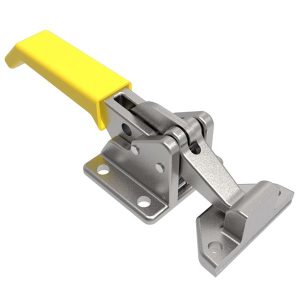
Compression latches offer a unique alternative to traditional cam latches. Like all latches, they are used to join two or more objects, such as a door and a door frame. Only compression latches, however, are designed to apply compression to the objects with which they are used. So, what are the benefits of using a compression latch?
Tight Seal
One of the main benefits of using a compression latch is the ability to create a tight seal. As previously mentioned, compression latches are distinguished from traditional cam latches by their ability to apply compression. They will press against the door or surface on which they are installed, thus creating a tight seal.
Minimize Rattling and Vibrations
A compression latch can minimize rattling and vibrations. When certain objects like hoods and machinery panels shake, they may rattle. Not only is this a nuisance, but it can shorten their lifespan by promoting premature wear and tear. A compression latch, though, offers a simple solution. As it presses against the hood or machinery panel, it will minimize rattling and vibrations.
Keeps Out Dust and Moisture
If you’re tired of dealing with dust and moisture in a particular space, you may want to invest in a compression latch. Compression latches typically work in conjunction with a gasket. The gasket will compress from the force of the compression latch to prevent the intrusion of dust, moisture and other unwanted elements. Traditional cam latches, in comparison, will often leave a small space around the perimeter of the door or object through which elements may leak.
Easy to Use
Compression latches are easy to use. Many of them require nothing more than pulling to open or pushing to close. You can even use them while wearing gloves.
Locking vs Non-Locking Styles
While all compression latches are designed to apply compression, they are available in a variety of styles, including locking and non-locking styles. Locking compression latches are characterized by their ability to lock into place. After closing and locking them, you’ll need to use a key to open them back up. Non-locking compression latches, on the other hand, don’t require a key.
Self-Adjusting Styles
In addition to locking and non-locking, there are self-adjusting compression latches available. They still apply compression — just like other compression latches — but self-adjusting styles are able to adjust and optimize their level of compression automatically. If the door or surface begins to shift, for instance, the self-adjusting compression latch will adjust itself to ensure a tight seal.
